|
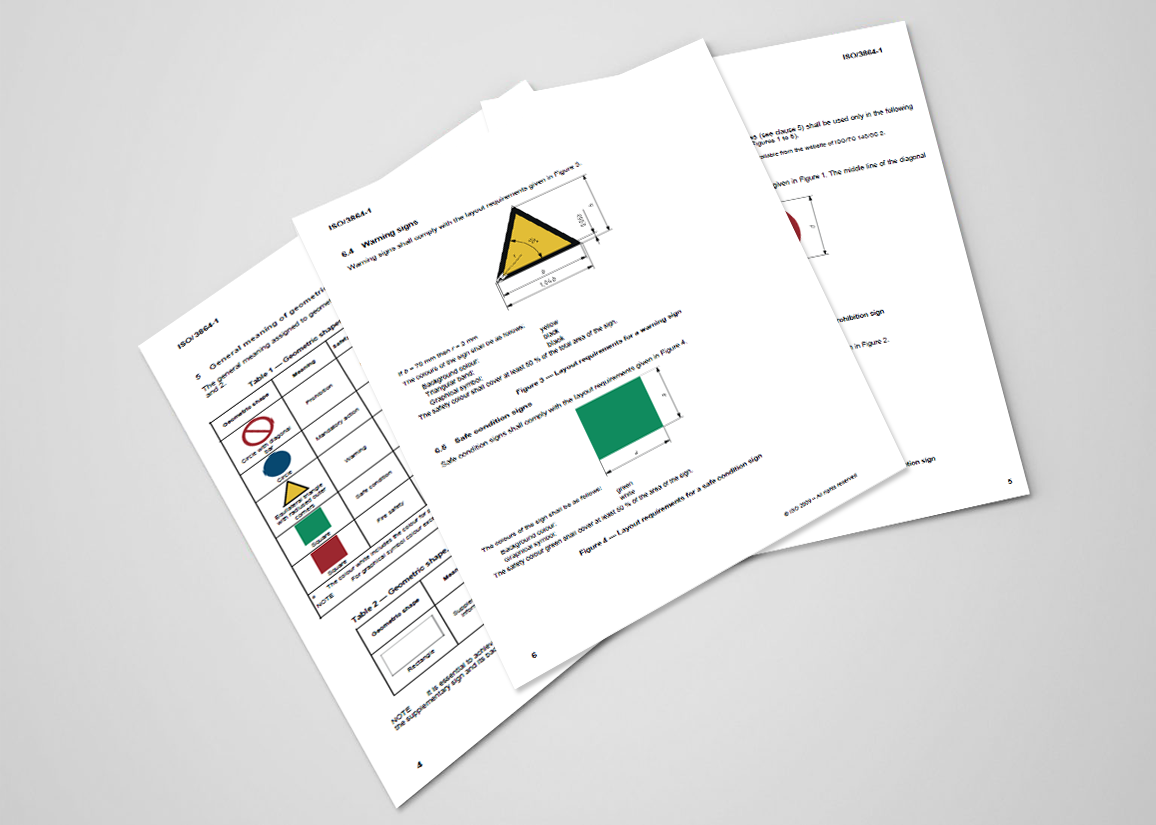
What are safety colours and shapes
Safety signs use various safety colours and shapes to convey important information and warnings. The colour and shape of a safety sign are designed to quickly and effectively communicate the message to individuals in different situations. Here are some common safety sign colours and shapes:
Geometric shapes, safety colours and contrast colours for safety signs
|
Geometric shape
|
Meaning
|
Safety colour
|
Contrast colour to the
safety colour
|
Graphical symbol
colour
|
Examples of use
|
|

Circle with diagonal bar
|
Prohibition |
Red |
Whitea |
Black |
— No smoking
— Not drinking water
— Do not touch
|
|

Circle
|
Mandatory action |
Blue |
Whitea |
Whitea |
— Wear eye protection
— Wear protective clothing
— Wash your hands
|
|
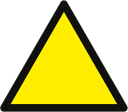
Equilateral triangle with
radiused outer corners
|
Warning |
Yellow |
Black |
Black |
— Warning; Hot surface
— Warning; Biological hazard
— Warning; Electricity
|
|

Square
|
Safe condition |
Green |
Whitea |
Whitea |
— First aid
— Emergency exit
— Evacuation assembly point
|
|

Square
|
Fire safety |
Red |
Whitea |
Whitea |
— Fire alarm call point
— Collection of fire fighting equipment
— Fire extinguisher
|
|
a = The colour white includes the colour for phosphorescent material under daylight conditions with properties as defined in ISO 3864-4.
|
Prohibition Signs
Prohibition signs are safety sign used to communicate prohibited action or behaviour in various settings. These signs typically feature a red circle with a diagonal line crossing out a symbol representing the prohibited action. The signs in ISO 7010 are designed to be easily recognizable and understood, regardless of language barriers.
Some common examples of prohibition signs include:
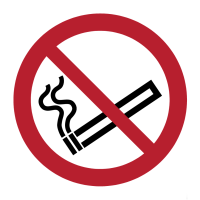 |
No Smoking:
This sign indicates that smoking is not allowed in the designated area.
|
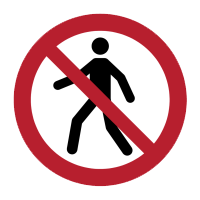 |
No thoroughfare:
This sign prohibits people from entering a specific pathway or zone, usually on roads or construction sites.
|
 |
No Cameras:
This sign may be used in places where photography or video recording is not permitted.
|
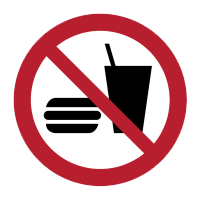 |
No Food or Drink:
This sign is commonly found in areas where consuming food or beverages is not allowed,
such as museums or certain sections of public transportation.
|
It's important to pay attention to prohibition signs as they help maintain a safe environment in various public and private spaces.
Mandatory Signs
Mandatory fire signs are a type of safety signage that indicates specific actions or behaviors that are required to be followed. These signs are typically placed in buildings, workplaces, and public areas to ensure that people know what to do to protect themselves and others.
Here are some common examples of mandatory safety signs:
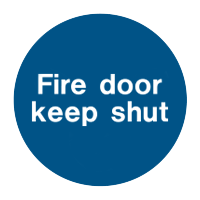 |
Fire Door Keep Shut:
These signs remind people to keep fire doors closed at all times.
Fire doors are crucial in preventing the spread of fire and smoke,
and they should not be propped open.
|
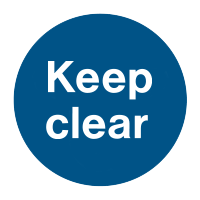 |
Keep Clear:
Placed near firefighting equipment, doors and machinery to ensure that these
areas are not obstructed or blocked.
|
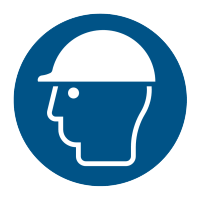 |
Wear Head Protection:
This sign indicates that a hard hat must be worn to protect the head from
falling objects or potential head injuries.
|
 |
Wear eye protection:
This sign indicates that safety glasses or goggles must be worn to protect the
eyes from flying debris, chemical splashes, or other hazards.
|
Familiarising yourself and understanding the meanings of mandatory signs will they help maintain a safe environment.
Warning Signs
Warning safety signs are designed to alert people to potential hazards or dangers in a particular area. These signs are typically displayed in workplaces, public spaces, construction sites, and various other locations to promote safety and prevent accidents. Warning signs are characterized by their triangular shape, with a black pictogram or symbol on a yellow background.
Here are some common examples of warning safety signs:
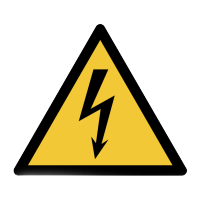 |
Warning; Electricity:
Indicates the presence of electrical equipment or areas with high voltage,
warning people to stay away or take necessary safety measures.
|
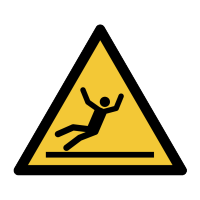 |
Warning; Slippery surface:
This sign alerts people to the possibility of a slippery floor or surface,
cautioning them to walk carefully to avoid slipping.
|
 |
Warning; Corrosive substance:
This sign indicates the presence of dangerous chemicals or substances
and reminds individuals to handle them with care.
|
 |
Warning; Falling objects:
This sign is commonly used in construction zones or areas where
objects may fall from above, alerting people to the danger.
|
Warning safety signs play a crucial role in ensuring the safety of individuals and should always be heeded to prevent accidents and injuries. It's essential to familiarize yourself with these signs and their meanings to stay safe in different environments.
Safe Condition Signs
Safe condition signs are a type of safety signage used to indicate the location of safety-related equipment or areas within a facility. These signs have green backgrounds with white symbols. Safe condition signs are designed to provide information and direction to ensure the safety of individuals in the area.
Here are some common examples of safe condition signs:
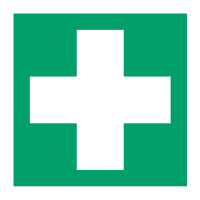 |
First Aid Sign:
These signs identify the location of first aid stations or kits. They often
feature the white cross symbol on a green background.
|
 |
Emergency Eyewash Station Sign:
This sign marks the location of emergency eyewash stations in case
of chemical spills or exposure.
|
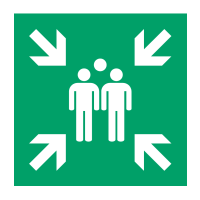 |
Emergency Assembly Point Signs:
These signs indicate where individuals should gather in case of an
emergency evacuation.
|
 |
Emergency AED Signs:
These signs highlight the location of automated external defibrillators
(AED) and can be found in public places including shopping centres,
restaurants, public transport, and many other location.
|
Remember that the design and symbols used in safe condition signs may vary depending on the country and region, as there might be slight differences in safety sign standards. However, the core purpose of these signs remains the same - to promote safety awareness and guide people to the appropriate safety resources in the event of an emergency.
Fire safety signs
Fire safety signs are visual aids used to convey important information about fire safety measures, hazards, and escape routes in buildings and public spaces. These signs play a crucial role in ensuring the safety of occupants during emergencies and guiding them to appropriate actions.
Here are some common fire safety signs:
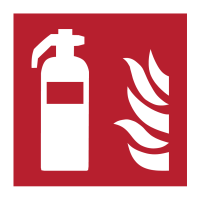 |
Fire Extinguisher Sign:
Indicates the location of fire extinguishers. Usually depicted by a
white symbol of a fire extinguisher on a red rectangular background.
|
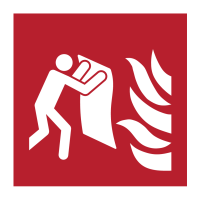 |
Fire Blanket Sign:
Indicates the location of fire blankets. Displayed as a white symbol
of a Human figure holding a fire blanket, flame determinant
on a red background.
|
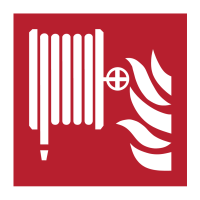 |
Fire Hose Reel Sign:
Identifies the location of fire hose reels. Usually depicted by a white
symbol of a hose reel on a red rectangular background.
|
 |
Fire Alarm Sign:
Informs people about the location of fire alarms. displayed as a white
hand with one finger extended, dot in square symbol,
flame determinant on a red background.
|
These signs are standardized and follow specific design guidelines from ISO 3864-3 & ISO 7010 to ensure easy recognition and understanding, even in stressful situations. They are essential in helping people quickly identify fire safety equipment, and important safety measures during an emergency.
|

























